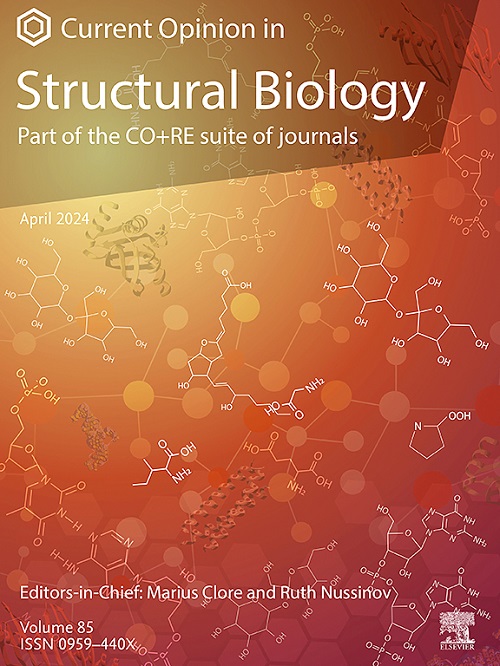Structures and mechanisms of AAA+ protein complexes in DNA processing
IF 6.1
2区 生物学
Q1 BIOCHEMISTRY & MOLECULAR BIOLOGY
引用次数: 0
Abstract
AAA+ proteins are a large family of ATPases involved in a myriad of cellular activities. Recent advances in AAA+ proteins, especially cryoEM structures of these proteins in complex with their substrates, have provided key insights into how they function. Here we review recent progress in structural studies and mechanistic understanding of AAA+ proteins involved in DNA processing, including gene transcription, DNA replication, repair/recombination and transposition. Using a few selected examples, we show how AAA+ proteins act on both DNA and protein peptides, which are often enclosed in the pores of AAA+ hexamers. We propose that using AAA+ proteins to translocate a peptide to partially unfold a substrate is an effective strategy in disassembling an assembled complex. Further, several studies show that although they often act as asymmetric hexamers in their active form, AAA+ proteins adopt a range of oligomers for their functions.
DNA加工中AAA+蛋白复合物的结构和机制
AAA+蛋白是atp酶的一个大家族,参与了无数的细胞活动。AAA+蛋白的最新进展,特别是这些蛋白与底物复合物的低温电镜结构,为了解它们的功能提供了关键的见解。本文综述了AAA+蛋白在基因转录、DNA复制、修复/重组和转位等DNA加工过程中的结构研究和机制理解的最新进展。通过一些选择的例子,我们展示了AAA+蛋白如何作用于DNA和蛋白肽,它们通常被包裹在AAA+六聚体的孔隙中。我们提出,使用AAA+蛋白使肽易位以部分展开底物是分解组装复合物的有效策略。此外,一些研究表明,虽然它们在活性形式下经常作为不对称六聚体,但AAA+蛋白采用一系列低聚物来发挥其功能。
本文章由计算机程序翻译,如有差异,请以英文原文为准。
求助全文
约1分钟内获得全文
求助全文
来源期刊

Current opinion in structural biology
生物-生化与分子生物学
CiteScore
12.20
自引率
2.90%
发文量
179
审稿时长
6-12 weeks
期刊介绍:
Current Opinion in Structural Biology (COSB) aims to stimulate scientifically grounded, interdisciplinary, multi-scale debate and exchange of ideas. It contains polished, concise and timely reviews and opinions, with particular emphasis on those articles published in the past two years. In addition to describing recent trends, the authors are encouraged to give their subjective opinion of the topics discussed.
In COSB, we help the reader by providing in a systematic manner:
1. The views of experts on current advances in their field in a clear and readable form.
2. Evaluations of the most interesting papers, annotated by experts, from the great wealth of original publications.
[...]
The subject of Structural Biology is divided into twelve themed sections, each of which is reviewed once a year. Each issue contains two sections, and the amount of space devoted to each section is related to its importance.
-Folding and Binding-
Nucleic acids and their protein complexes-
Macromolecular Machines-
Theory and Simulation-
Sequences and Topology-
New constructs and expression of proteins-
Membranes-
Engineering and Design-
Carbohydrate-protein interactions and glycosylation-
Biophysical and molecular biological methods-
Multi-protein assemblies in signalling-
Catalysis and Regulation
 求助内容:
求助内容: 应助结果提醒方式:
应助结果提醒方式:


